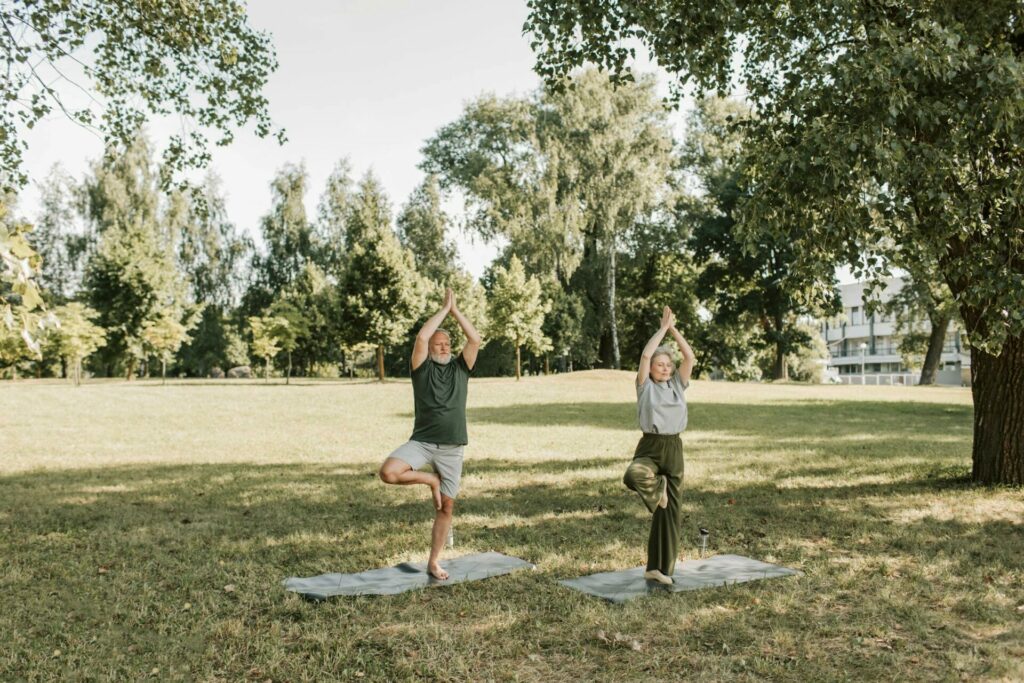Exercise can positively affect your environmental health by encouraging daily habits that are both good for your body and gentle on the planet. When you choose to walk or ride a bike instead of using a car, you’re not just getting physical activity—you’re also reducing air pollution and saving fuel. Working out outdoors, like in a park or garden, means using less electricity compared to indoor gyms, while also giving your lungs cleaner air and your mind a peaceful break. Even small actions—like using reusable water bottles, wearing long-lasting workout clothes, or picking up litter while jogging—can make your environment cleaner and healthier.
Exercise doesn’t just help you feel better; it also helps the world around you breathe a little easier too.
- Clean air to breathe
- Safe water to drink
- Green spaces for play and relaxation
What Is Environmental Health?
Environmental health is all about making sure the world around us is clean, safe, and supportive of good health. Imagine breathing fresh air, drinking clean water, walking through parks full of trees, and hearing birds instead of car horns. That’s the goal. It’s not just about nature—it’s about how your surroundings affect your body, your mind, and your future. When our environment is polluted or noisy, it can cause stress, sickness, and other health problems. But when it’s clean and green, we feel better inside and out.

Kids playing outside without getting sick, elders walking in parks without worrying about traffic fumes, and everyone enjoying the simple act of being outdoors—that’s what environmental health aims to protect. It connects directly to public health and personal well-being. And the interesting part? Exercise plays a big role in making this happen.
How Human Habits Affect the Planet
Let’s be honest—many of our everyday habits aren’t very kind to the planet. For example, we often drive even short distances, buy too many things we don’t need, waste food, and use lots of plastic. These small actions, repeated millions of times by millions of people, add up.
Here’s how:
- Driving Everywhere: Cars burn fuel and release gases that make the air dirty and the planet warmer.
- Wasting Food: Growing and throwing away food wastes water, land, and energy.
- Fast Fashion: Cheap clothes made fast usually end up in trash after a few wears.
- Plastic Overload: Bottles, bags, and wrappers often end up in oceans, hurting animals and polluting beaches.
But here’s the good news: small changes in how we move—like choosing to walk or bike—can help. And yes, those changes count as exercise too.
Exercise and the Environment: The Hidden Link
At first glance, working out seems like something we do for our body. But it turns out, it also affects the air we breathe, the cities we live in, and even the weather. This connection isn’t always obvious, but it’s powerful.
Let’s break it down:
- Walking or Biking Instead of Driving: Less smoke from cars means cleaner air.
- Outdoor Activities: Running in a park doesn’t need electricity like a treadmill does.
- Minimal Gear: Using your own body to work out (like pushups or yoga) means no waste or fancy machines.
When we choose greener ways to move, we make a big difference. It’s not just about burning calories—it’s about burning less fuel.
Eco-Friendly Ways to Stay Active
Being fit doesn’t have to mean joining a gym, buying tons of workout clothes, or using machines that eat up electricity. Here are some eco-friendly ways to stay active that are better for you and the earth:
1. Walk or Bike
Walking or cycling instead of using a car is one of the simplest ways to get exercise while helping the planet. You save money on gas, reduce pollution, and improve your heart health.
2. Use Parks and Nature Trails
Instead of a crowded gym, try a local park. It’s free, quiet, and filled with fresh air. Trees soak up pollution and give off oxygen, making your workout better for your lungs and your mind.
3. Choose Reusable Gear
Instead of buying plastic bottles or disposable towels, use a refillable water bottle and washable cloth. Buy second-hand workout clothes or trade with friends. Less waste, more savings.
4. Try Plogging
Plogging means jogging while picking up litter. It’s popular in many countries and makes your runs more meaningful. You clean your body and the streets at the same time.
Real Stories: How People Combine Fitness and Green Living
Maria, 34, Teacher
“I used to drive 10 minutes to work. Then I started walking instead. Not only did I lose weight, but I began noticing how much cleaner and quieter the mornings felt. I even started seeing birds I hadn’t noticed before.”
Jake, 22, Student
“Our college gave us free bus rides, but my friends and I started biking instead. The bike racks were always full, so the school added more. Now more students are active—and campus air smells fresher too.”
Lena, 50, Nurse
“Every Saturday, I hike with a group that picks up trash along the trail. It’s peaceful and productive. It reminds me that staying healthy isn’t just for me—it helps everyone around me.”
These are just everyday people, making small choices that help themselves and their communities.
Personal Advice From Health and Environmental Experts
Let’s hear from experts who understand both health and the environment:
- Dr. Saira Khan (Public Health Specialist): “Walking daily, even for errands, can lower your risk of heart disease and reduce carbon emissions.”
- Prof. Lee Chen (Environmental Researcher): “Exercising in daylight saves electricity and gives you a dose of vitamin D.”
- Coach Tara R. (Fitness Coach): “Your body is your gym. Use it. Simple moves like squats, stretches, and yoga need no machines.”
- Dr. James Holt (Lung Specialist): “Breathing fresh outdoor air while moving helps clean your lungs and strengthens your breathing muscles.”
These tips don’t require fancy tools. Just time, awareness, and consistency.
A Look at the Science Behind It All
Science backs up the link between exercise and environmental health. Here’s what studies say:
- Outdoor Exercise Improves Mental Health: Studies show that spending just 20 minutes in nature reduces anxiety and boosts mood.
- Active Transport Cuts Pollution: People who walk or bike regularly produce far less carbon than drivers.
- Green Areas Promote Healthier Lives: Areas with parks and trees see lower rates of obesity, depression, and asthma.
| Topic | Research Result |
|---|---|
| Outdoor Activity | Lowers blood pressure and improves sleep |
| Biking and Walking | Reduces city air pollution significantly |
| Access to Parks | Linked to lower hospital visits |
Everyday Actions That Help Both You and the Earth
Here are some things you can do that make your body and the planet healthier:
- Walk or bike whenever you can
- Use reusable water bottles and towels
- Exercise outdoors
- Wear long-lasting workout clothes
- Recycle old sneakers
Even five-minute actions matter. You don’t need to change everything overnight—just take one small step every day.
My Experience: A Simple Change That Made a Big Impact
A few years ago, I used to drive to work even though it was just a 15-minute walk. One day, I left the car and walked instead. At first, it was hard. But soon, I noticed I felt more awake in the morning. My legs got stronger. I saved money on fuel. And I noticed things—flowers blooming, kids laughing—that I’d never seen from behind the wheel.
That one change gave me:
- A stronger body
- A calmer mind
- A cleaner neighborhood
It taught me that exercise isn’t just something you do at the gym. It’s something you live.
The Future of Fitness and Environmental Health

The future looks promising. Cities are:
- Building more bike lanes
- Planting trees
- Designing open-air gyms
Fitness brands are making gear from old fishing nets and plastic bottles. People are realizing that being fit and being eco-friendly go hand in hand.
We can support this future by:
- Making greener travel choices
- Buying less and choosing better
- Telling others about these simple wins
Exercise is not just about abs or weight loss. It’s about being kind—to your body and to the planet. That’s the real strength we need moving forward.
FAQs on How Exercise Can Positively Affect Your Environmental Health
Q1: How does walking or biking instead of driving help the environment?
Answer: Walking or biking means fewer cars on the road, which leads to less air pollution. Cars release harmful gases that damage the air we breathe and contribute to climate change. By choosing to walk or cycle, you’re keeping the air cleaner and reducing your carbon footprint—all while getting healthier yourself.
Q2: Can outdoor exercise improve mental health and help the planet?
Answer: Yes! Exercising outside in nature reduces stress, boosts mood, and requires no electricity—unlike gym machines. Plus, when more people use parks and green spaces, communities are more likely to protect and maintain them, supporting environmental health too.
Q3: What are some eco-friendly ways to exercise?
Answer: Eco-friendly exercise can include walking, cycling, hiking, yoga in the park, or bodyweight workouts at home. These don’t require electricity or wasteful gear. You can also reuse workout clothes and water bottles to reduce waste.
Q4: How does exercise help reduce noise and air pollution in cities?
Answer: When more people walk or bike, there are fewer cars on the road, which means less noise and less dirty air. This makes cities quieter and more pleasant for everyone, especially children and older adults.
Q5: Does going to the gym hurt the environment?
Answer: Gyms use electricity for machines, air conditioning, and lights, which can raise energy use. While gyms are great for fitness, working out outside or at home sometimes can reduce your environmental impact and save energy.
Q6: Can exercise help protect green spaces?
Answer: Absolutely. People who regularly use parks and trails are more likely to care about their upkeep. When you exercise outdoors, you become more connected to nature and may support efforts to keep those spaces clean and safe.
Q7: What is “plogging” and how does it help?
Answer: Plogging is jogging while picking up trash. It started in Sweden and has become a fun, eco-friendly workout. You get exercise, clean your neighborhood, and make a positive impact with every run.
Q8: Is exercising outdoors better for the environment than using gym equipment?
Answer: Yes, because outdoor exercise doesn’t rely on electricity or heavy machines. It uses your body and natural surroundings, making it a greener way to stay fit. It’s also free and more refreshing!
Q9: What kind of gear should I use to make my workouts eco-friendly?
Answer: Try to use durable, reusable gear like metal water bottles, second-hand clothes, and washable towels. Avoid single-use plastic items and throwaway products. Choose quality over quantity to reduce waste.
Q10: Can my small changes really make a difference to the environment?
Answer: Yes, they can. When one person walks instead of drives or picks up trash during a jog, it may seem small—but it inspires others. And when many people make small changes, they add up to big environmental improvements.

